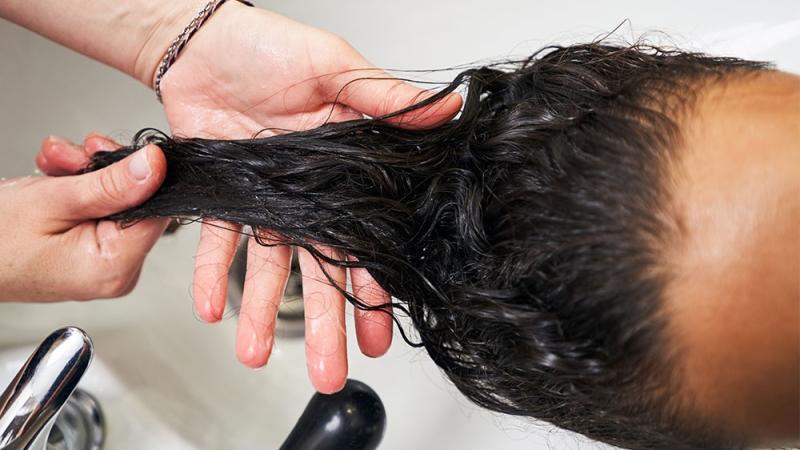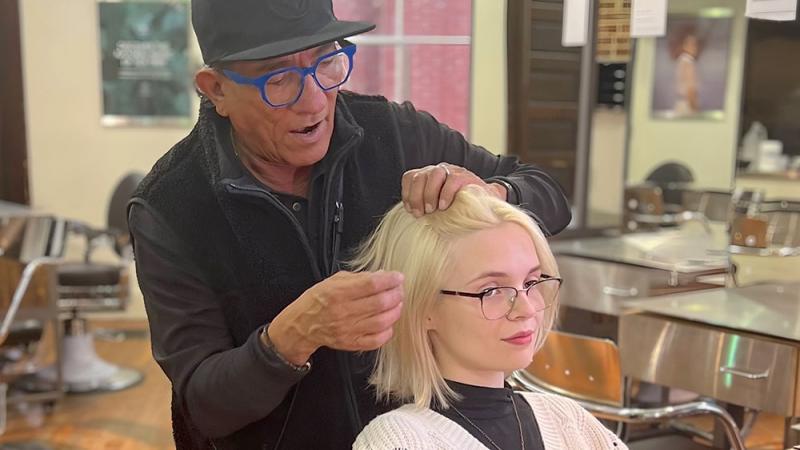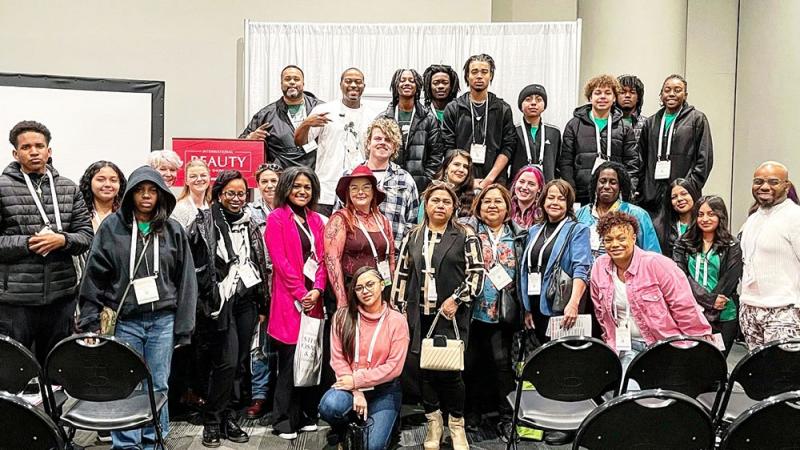The recent International Beauty Show – New York 2024 had three jam-packed days of enlightening information for and about today’s beauty professionals and the industry itself. Here are key takeaways from some of the elite instructors and panelists who presented there.
The MYAVANA Pro Panel: Don’t Sleep on Clarifying Shampoo

Led by silk-press pioneer Robin D. Groover — the MYAVANA Chief Hair Officer & Head of Research & Development — the panel discussed several insights they’ve gleaned from years of analyzing hair samples in the lab. A big one: People are skipping clarifying shampoo way too much.
“Clarifying shampoo has been lost, and buildup is a real thing,” the panel said. “Stylists need to educate clients about clarifying shampoo, especially with textured hair. If there’s too much buildup, moisturizing products can’t penetrate the hair shaft.
“In the lab, we rarely if ever, get hair samples without some buildup.”
Nina Tulio: Use This Formula to Determine Salon Service Prices

Salon business coach Nina Tulio said that “if you get your salon prices from your competition, a Facebook salon owners’ group, your feelings, or a friend — you’re probably undercharging.” She offered an easy formula for determining service pricing: “Find your price per minute and price per hour.”
Divide your service price by the number of minutes it takes to perform the service for the price per minute. Then, multiply by 60 for the price per hour.
Tulio warns there is no one-size-fits-all rate. Only the business owner can determine what price per minute or hour is adequate to cover their supplies and overhead while turning a profit.
“There is no target for price per minute or hour, because everything needs to be customized for your business,” Tulio said.
“Look at your top three most requested services, and determine their price per minute. Compare them with the other services in your salon.
“If the lower-level services have a higher rate than your most popular services, you’re undercharging,” she said. “Be aware of what competitors are charging for their services, but don’t charge based on their pricing. Every business is different.”
Brandi Fulton: Be in Sync With Your Accountant

Salon finance specialist Brandi Fulton was surprised to find that many salon owners taking her class didn’t have a firm grasp of their Profit & Loss Statements (P&L). If that’s the case, she says, it’s time to find another accountant to handle business finances — a person willing to teach, explain, and work closely with clients.
“If your accountant isn’t explaining your P&L to help you understand your numbers, you need a new accountant,” she told the business owners in her class. “You should be comfortable and confident talking to your accountant every month.”
Steve Gomez: The Best Investment in Your Business is Your Own Time

Salon business coach Steve Gomez warned owners that being “too busy” with clients can cost their company dearly. “The most important customer you have is the business itself!” he told his class. “If you’re too busy being busy, it’s physically and emotionally exhausting.”
He encouraged salon owners to delegate tasks, making it possible to invest time and energy each week into their business.
One critical way to use this time: meeting individually with team members once a month, he said. “You should always have homework for the person you’re meeting with. Preparation is critical for these meetings.
“Have questions for them to answer, numbers for them to pull so you can review them together. Ask them for ideas and solutions, ways they think the business can improve. Remember that managers tell, leaders ask.”
Gabrielle Allen: Don’t Focus on Followers. Focus on Engagement

Salon social media expert Gabrielle Allen told her class to throw away outdated measurements for social media success. Engagement, not followers, is the best way to gauge if your content is hitting the mark with your intended audience.
“Prioritize engagement and customer data collection over everything,” Allen said. “So if the algorithm changes — and it will change — you'll be solid.”
In her experience, “the average person follows you for more than a year before they book you,” she said. “So if you stop posting, you’re stopping the growth of your future clientele.
“They want to watch you. They’re trying to decide, do I trust you?” she said. “The average touch-point is now 24 times before somebody buys something” — or in this case, books an appointment.
Because of this delay between engaging and booking, Allen recommends that beauty and grooming professionals use their social platforms to teach their audience about trends, techniques, and useful information from their areas of expertise.
“If you educate people, they’re more likely to come to you,” she said. “They’re going to try what you tell them, and if it works, they’ll book you.”
Sam Villa: How You Communicate Behind the Chair Builds Your Wealth

Industry legend Sam Villa told beauty professionals that in order to achieve career success, it’s important to let go of ego and listen closely to the person in the chair.
“Today’s world is about creating an experience behind the chair,” he said. “To stand behind that chair takes courage, and your listening skills are going to set you up for success.”
Villa recommended a specific way to start a client consultation. “I ask them ‘What are your goals for your hair?’ I don’t ask them ‘What are we doing today?’” he said. “Find out their goals and interpret what they mean by that. It’s about fulfilling their expectations and needs.
“Focus on that person there in your chair with intent and purpose,” Villa said. “Whether you know it or not, you’re a teacher. Teach them behind the chair. The hairdresser who wants to be a conversationalist will be left behind.”
Villa advised stylists to set up clients’ phone cameras and record them blow-drying their hair, so the client can re-watch and learn the technique at home.
“I tell my clients, ‘You say you wish I could come home with you and do your hair? Well, here you go — now you can take Sam home!’”
Thomas James: Use Professional Language to Build Trust Behind the Chair

While teaching cosmetology students how to pass their upcoming state board exams, beauty and barber educator Thomas “Mr. Stateboard” James reminded them it’s important to use professional terminology — not just on the test, but for the rest of their careers.
He advised students to stick to expert language during a client consultation (for instance, nape instead of “back of neck;” or apex instead of “top of head”).
“This is terminology you’ll want to use throughout your career,” he said. “The more professional you sound, the more your clients will trust you.”